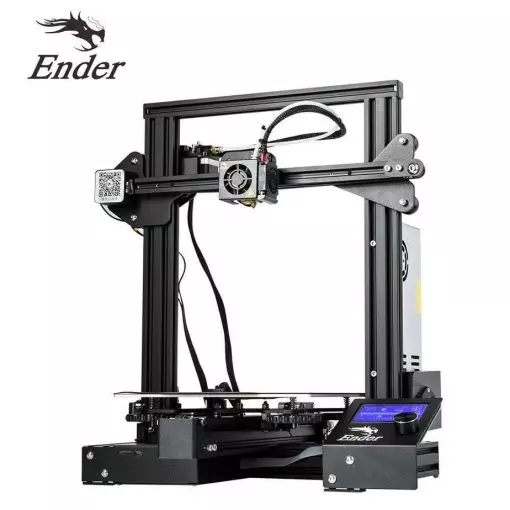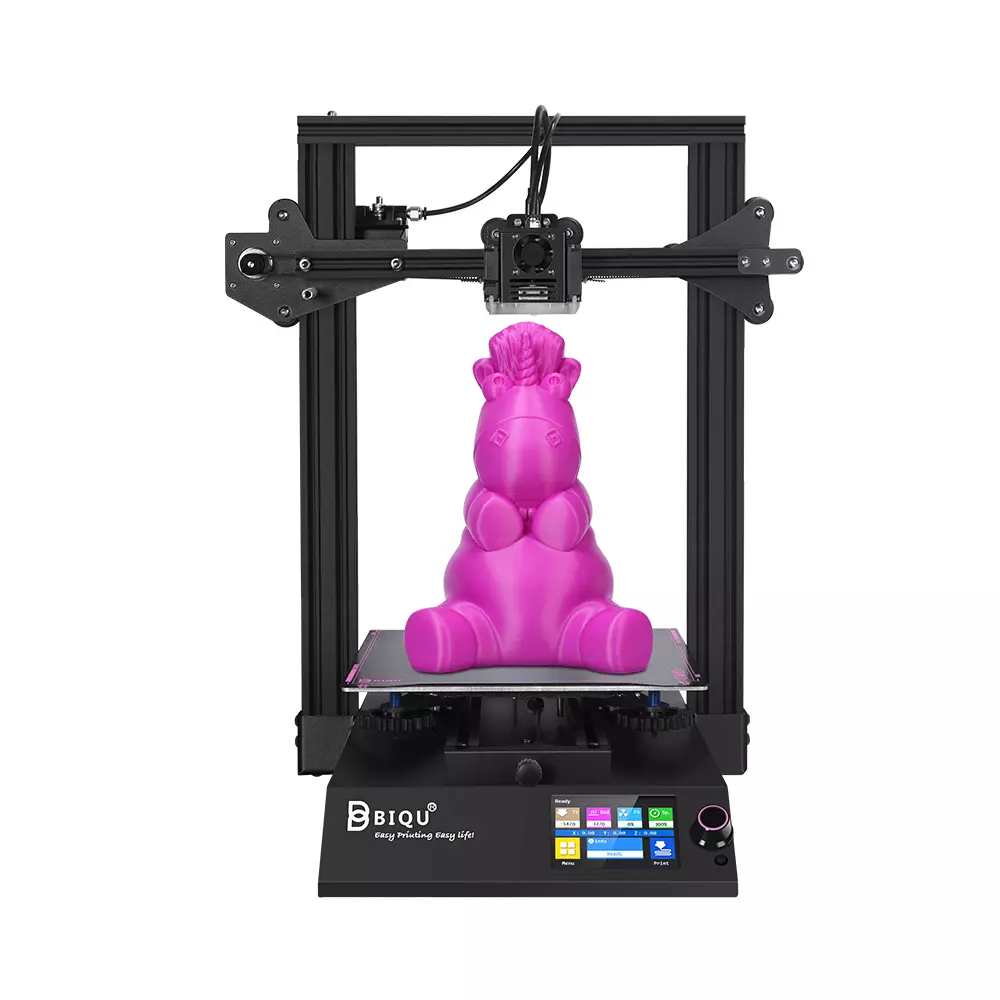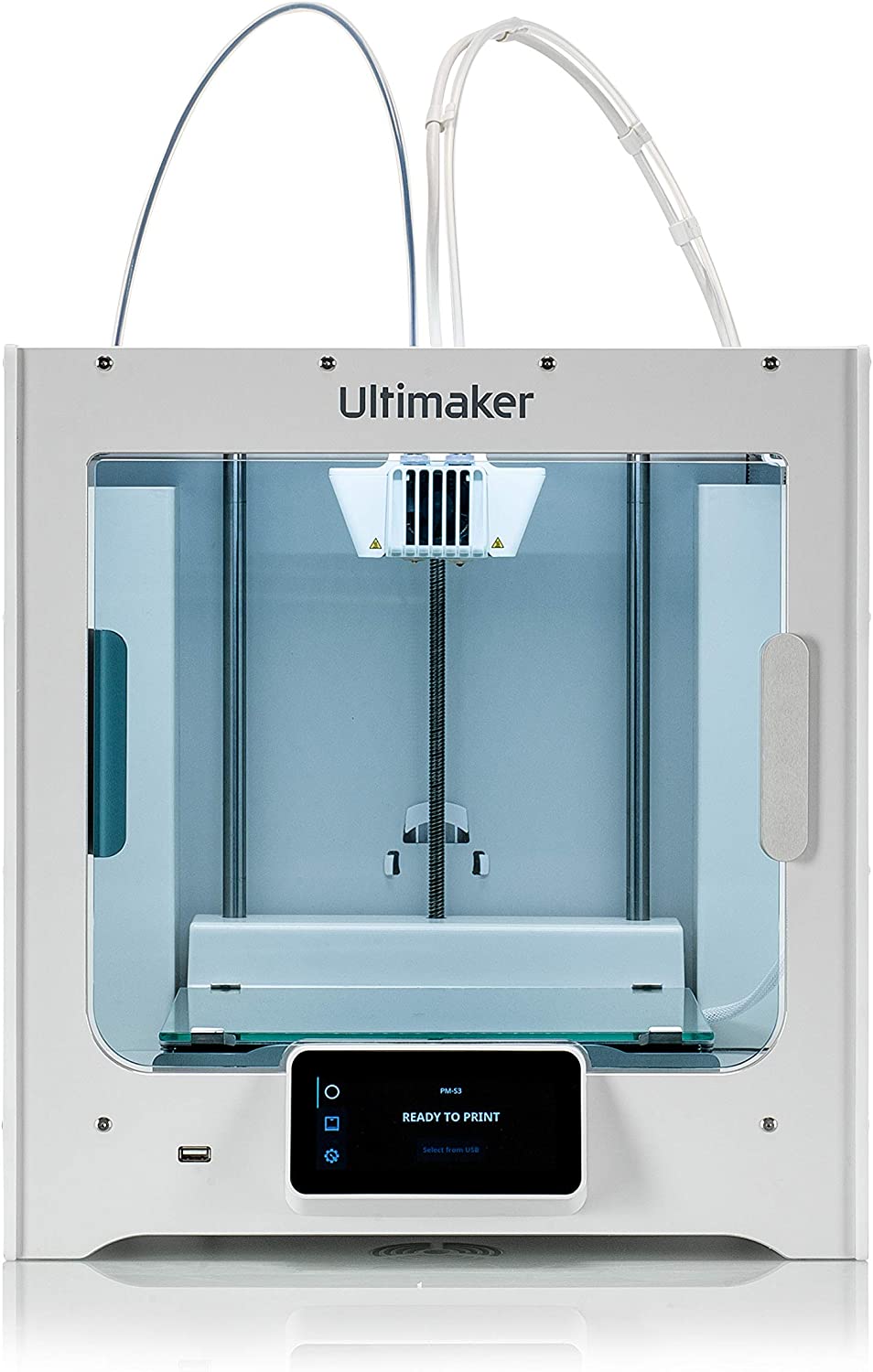Compare Ender 3 vs BIQU B1 vs S5
Comparison between the best 3D printers
Choose the best 3D printer at the best price. The cheapest 3D printers are here.
Buy a 3D printer here with 3D Fila.
 |
 |
 |
|
| Model | Ender 3[BUY Ender 3] |
BIQU B1 |
S5 |
| Estimated price | $210,00 | $269,00 | $6950,00 |
| Fabricante | Creality 3D | BigTreeTech | Ultimaker |
| Release Year | 2018 | 2020 | 2021 |
| Print Volume [mm] | 220x220x250 | 235x235x270 | 330x340x300 |
| Printer Size [mm] | 440x440x465 | 412x402x492 | 495x585x780 |
| Weight [kg] | 6,62 | 8,00 | 20,6 |
| Power Loss Recovery | NO | YES | YES |
| Enclosed printer | NO | NO | NO |
| Bed Leveling | Manual | Manual | Automatic |
| Filament End Sensor | NO | YES | YES |
| Bed type | Heated | Heated | Heated |
| Power supply system | Bowden | Bowden | Bowden |
| Standard nozzle | 0,4 | 0,4 | 0,4 |
| Maximum Nozzle Temperature [°C] | 255 | 250 | 280 |
| Maximum Bed Temperature [°C] | 110 | 100 | 140 |
| Maximum printing speed [mm/s] | 180 | 100 | 80 |
| Filament holder | YES | YES | YES |
| Camera for supervision | NO | NO | YES |
| Recommended filaments | PLA, TPU, ABS, PETG | PLA, TPU, ABS, PETG | PLA, ABS, PETG, PC, Nylon, Tritan |
| Recommended slicers | Cura, Simplify, Slic3r | Cura, Simplify, Slic3r | Cura |
| Maximum Resolution [mm] | 0,1 | 0,1 | 0,1 |
| Processor | 8 bits | 32 Bits BTT SKR V 1.4 | |
| Display | Mono | Touchscreen TFT 3,5'' | Display touchscreen 4,7'' |
| Power Supply | 24V / 270W | 24V / 360W | 110/220V / 500W |
| Connectivity | SD / USB | SD / USB | USB / Wi-Fi |
| Operating systems | Windows, Mac, Linux | Windows, Mac, Linux | Windows, Mac, Linux |
| Date of registration in the system | 2021-04-13 | 2021-04-14 | 2022-11-08 |
| Release date | 2018 | 2020 | 2021 |
| Extra features | The Ender 3 V1 is a DIY assembly 3D printer, a sales leader since 2017, standing out for its cost-benefit. With a wide printing capacity, it has a CNC machined structure for precision and stability. It offers high-precision prints with low noise, thanks to its innovative V-profile and pulleys. It has a self-adhesive magnetic platform for easy removal of models and excellent adhesion. The Ender 3 heats up quickly, reaching 100°C in 5 minutes, ideal for agile prints. It includes protection against power failures, allowing you to resume printing after interruptions, saving time and material. | The BIQU B1 is an advanced 3D printer with a silent 32-bit BTT SKR V1.4 motherboard and ARM Cortex-M3 CPU, offering DIY interfaces (I2C, SPI, WiFi) and dual Z-axis. Its dual BTT B1 TFT35 V3.0 operating system allows real-time monitoring and multiple printing modes, including G-code visualization effects. It stands out for its BIQU SSS (Super Spring Steel), ensuring easy model adhesion and simplified removal, with the possibility of using it on both sides. It includes a filament sensor, automatically pausing printing in case of filament breakage. The multicolored RGB lights integrated into the hotend allow you to view the printing status even at night. Additional notes include the need for a BIQU-specific Type-C cable and extra interfaces for smart filament sensor and BL Touch. | The Ultimaker S5 stands out for its easy loading and unloading of materials, automatic bed leveling and excellent print quality with resolutions from 60 to 400 microns. It has dual extruders, interchangeable print cores, advanced connectivity with Wi-Fi and LAN, and intuitive software. It includes a Wi-Fi camera for monitoring, a removable glass bed, and a large build volume, making it ideal for professional and creative environments. |
| Support for multiple colors and materials (AMS and CFS) | NO | NO | NO |
Notes * |
|||
| Cost-benefit | 6 / 10 | 6 / 10 | 2 / 10 |
| Hardware | 0.5 / 10 | 2 / 10 | 3.6 / 10 |
| Screen | . | . | . |
| Print volume | 3 / 10 | 3 / 10 | 4 / 10 |
| Performance | 1 / 10 | 0 / 10 | 1 / 10 |
| [BUY Ender 3] |
Conclusion |
| In conclusion, the comparison of the Ender 3, BIQU B1, and Ultimaker S5 highlights the distinct advantages and drawbacks of each model, catering to different user needs and budgets. The **Ender 3** stands out as a budget-friendly option with a solid cost-benefit ratio. Its DIY assembly encourages learning, and its relatively simple features make it a good choice for beginners or casual users. However, it lacks some advanced functionalities such as power loss recovery and filament sensors, which may limit its usability in certain scenarios. The **BIQU B1** offers a step up in terms of technology and features, including a more advanced motherboard, dual Z-axis, and a filament sensor. This model provides a richer experience for intermediate users looking for increased automation and print reliability without a significant jump in price. However, even with these enhancements, it still falls short compared to more expensive printers in terms of overall craftsmanship and capabilities. On the far end of the spectrum, the **Ultimaker S5** is geared towards professionals and serious hobbyists. With its higher price point, it justifies its cost through exceptional print quality, advanced features like automatic bed leveling and dual extruders, and superior connectivity options. However, its high price makes it less accessible for beginners or budget-conscious users. In summary, for those seeking an affordable entry into 3D printing, the **Ender 3** is commendable. The **BIQU B1** is more suitable for users who want additional features without breaking the bank, while the **Ultimaker S5** is best for professionals needing outstanding performance and reliability, making it worth the investment for serious projects. Ultimately, the choice between these models should be based on individual needs, experience levels, and budget considerations. |

